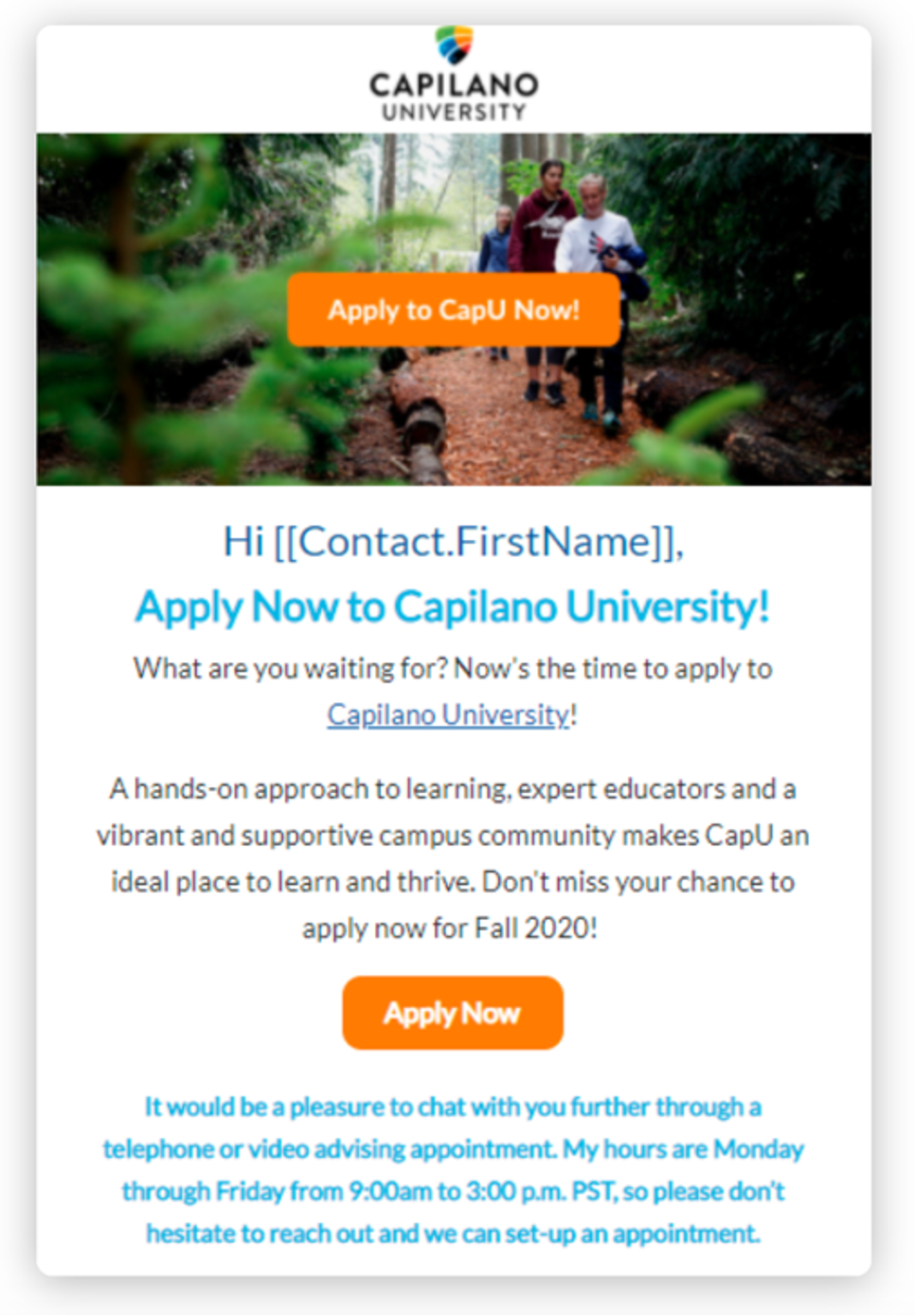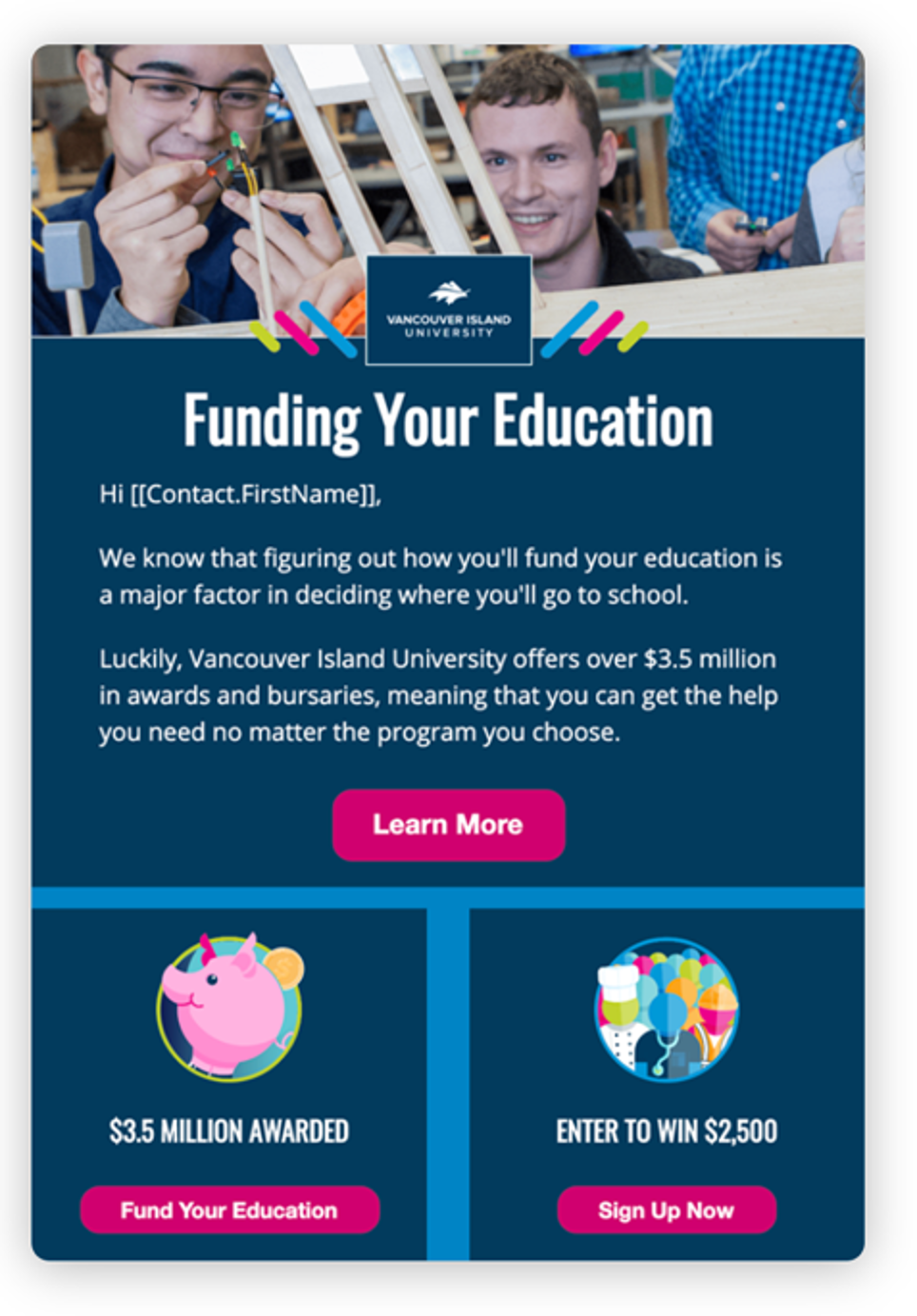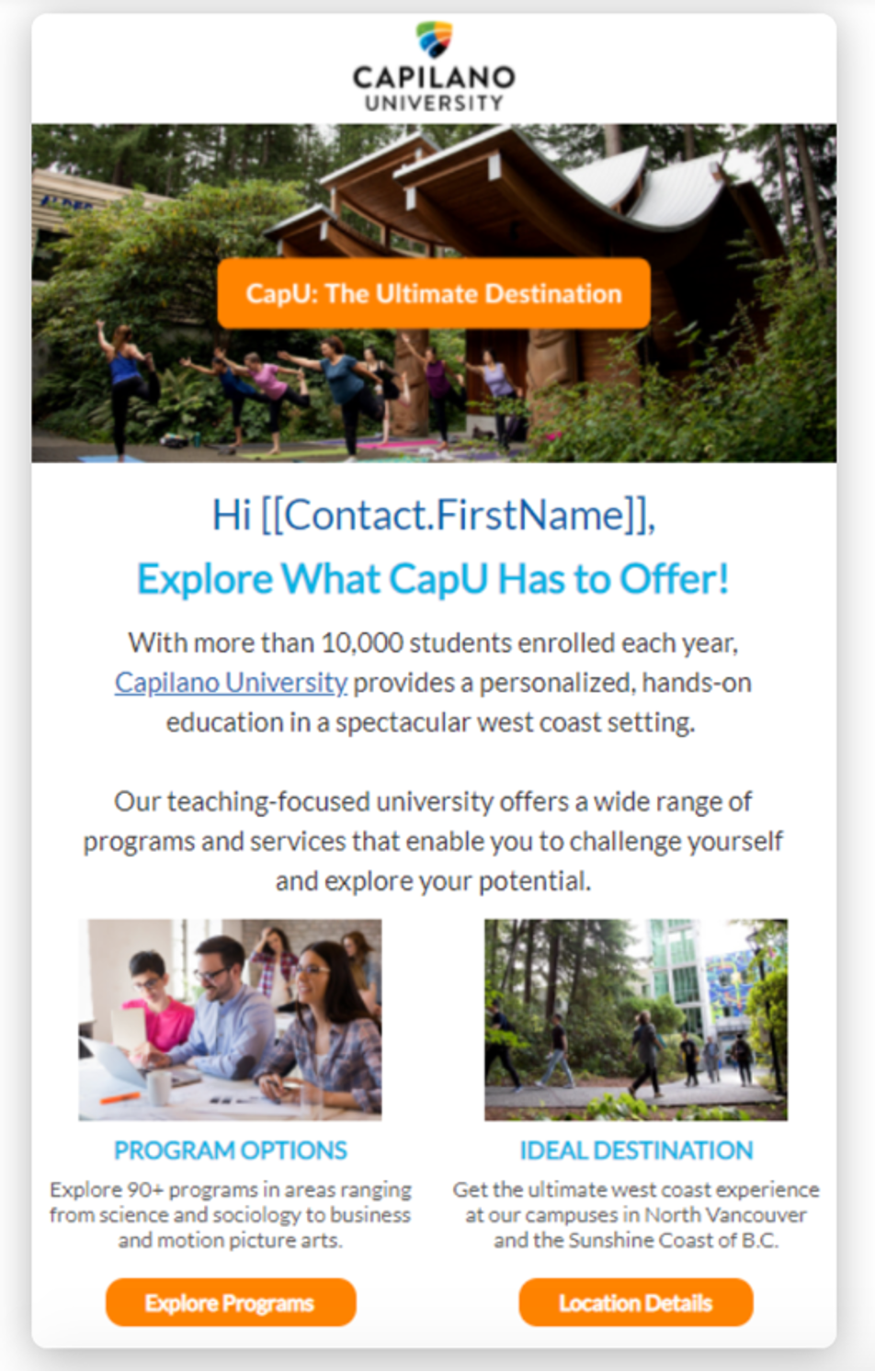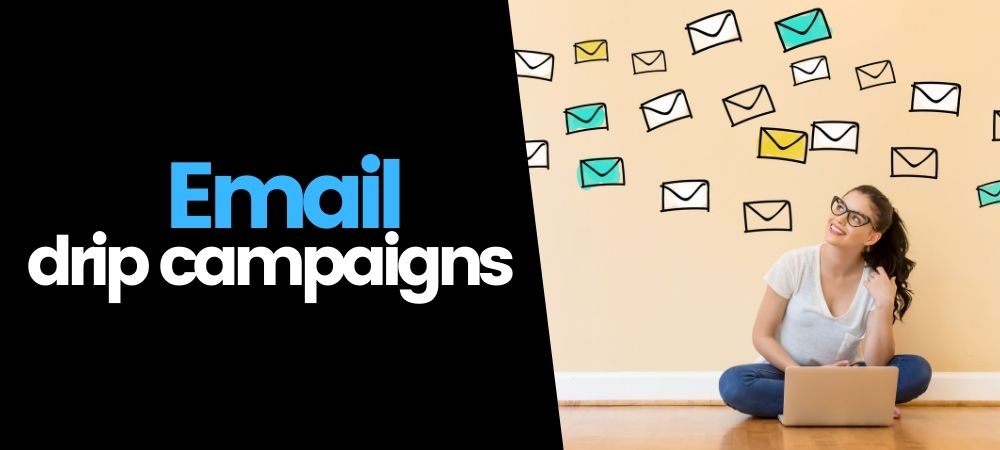Email drip campaigns can be invaluable for nurturing leads in your enrollment funnel.
Executed correctly, your email drip campaigns help provide targeted and personalized information to prospects at each stage of the admissions journey.
Creating email drip campaigns can be complex and multi-layered. We’ve created this guide to help you get started.
What is an email drip campaign?
An email drip campaign is a series of automated emails sent to prospects who take a specific action. Depending on audience and campaign goal, you can vary the email frequency and send-out rate.
In higher education, prospects might begin receiving drip emails after:
- Registering for a prospective student event
- Downloading a program brochure
- Completing an online interest form
- Working with admissions via email or phone
- Submitting an application
Drip emails provide prospects with targeted information at a specific point in time, such as last-minute application tips to anticipated applicants. According to email marketing firm Emma, targeted emails garner 18x more revenue than nontargeted—with a 119% increase in click-through rates for drip campaigns.
A powerful relationship-building tool
Relationship-building is the crux of drip marketing. Because email drip campaigns are consistent and ongoing, drip emails help schools deepen connections with prospects over time.
The only way to develop qualified leads is to build trusted relationships with prospects. Drip campaigns are one of the most effective and efficient ways to nurture these customer relationships.
Taline Badrikian, Founder, Laveh Inbound Marketing
Drip marketing can also help elevate brand awareness by shaping your school’s story in multiple stages. Other benefits include:
- Greater exposure of content, such as blogs and social media
- Higher content engagement
- Increased lead generation
Nurture leads at every stage
Drip campaigns are a powerful lead nurturing tool. Drip emails can connect you with prospects at each stage of the admissions funnel, allowing you to tailor content to specific prospect needs and interests.

Stages of the admissions funnel. Credit: Signal Vine.
A higher education drip campaign might follow a sequence such as:
- Prospect submits online interest form and receives welcome e-mail
- One week later, prospect receives second email featuring alumni success stories
- After submitting an application, prospect receives a thank you with next steps
- When admitted, prospect receives a congratulations email with celebratory school video
- After enrolled, prospect is directed to appropriate staff and faculty contacts
Email marketing company Automizy provides a useful visual with a simple drip campaign flow chart.

How to create email drip campaigns for higher education
1. Determine goals
When charting your campaign, first determine your desired end results. A clear vision is essential to guiding your strategy and content.
In addition to boosting enrollments, campaign goals might include:
- Elevating overall brand awareness
- Increasing awareness of a specific program
- Reaching students from a specific location
- Increasing engagement with website or blog
When structuring goals, consider using the SMART model. SMART ensures goals are:
- Specific
- Measurable
- Attainable
- Relevant
- Time-based
2. Define audience
The audience is arguably the most crucial element of an email drip campaign. The audience determines the choice of messaging and content—and helps dictate campaign triggers.
Consider segmenting your audience as much as possible. A targeted audience helps ensure the content you share is highly relevant.
The more refined your target is, the more personalized your messaging can be — which in turn produces stronger engagement.
Haley Prentice, Marketing Manager, School Finder Group
Potential segmentation categories include:
- Location
- Program or degree of interest
- Age
- Interested region of study
- Employment status
Once you’ve segmented your email list, assign specific campaign triggers to each group. For each segment, consider what information is valuable at what time—and what action will initiate communication.
3. Map campaign
Next, chart your campaign’s overarching themes and messages. Consider how each email might meet your audience’s needs and best integrate with the admissions funnel.
Other strategic considerations include:
- Start and end date
- Number and sequence of emails
- Send-out rate
- Campaign triggers
School Finder Group recommends the following framework:
- Start with a sequence of 12 emails
- Space emails 4-7 days apart
- Set up recurring campaigns to measure progress
4. Craft and schedule emails
When writing and designing drip emails, personalize as much as possible. Data shows 80% of people are more likely to do business with a brand offering personalized experiences—especially Gen Z.
Potential personalization strategies include:
- Using student name in salutation
- Inserting details on program of interest
- Addressing email from a specific person from admissions
- Using sender’s name and photo as the signature
- Utilizing imagery to reflect target audience’s demographic
Students also prefer less text (150 words or less), with more actionable details and resources. Best writing practices include:
- Using short (5-7 words) and action-oriented headlines
- Including a preheader
- Using minimal body text
- Inputting 3-6 hyperlinks to additional content
- Including social media buttons
Note: For more ideas on how to craft and templatize emails, check out our articles 15 Higher Education Email Templates and 10 Best Practices for Higher Education Email Marketing.
5. Measure and maintain
Like any marketing campaign, you’ll want to track results and adjust as knowledge evolves. Consider setting a regular cadence of evaluation—both during and after implementation—to analyze performance.
Key metrics to monitor include:
- Click-through rate
- Conversion rate
- Open rate
As school programs and offerings evolve, campaign copy may need tweaking as well. Be sure to periodically review campaign content to ensure the copy isn’t stale.
5 useful samples of email drip campaigns for colleges
We’ve compiled a variety of drip emails from Vancouver Island University (VIU) and Capilano University (CU), courtesy of School Finder Group. Check out the samples for inspiration on approach and strategy.
Build awareness

VIU’s “Discover Vancouver Island” email is ideal for new prospects. The email introduces the school and builds awareness by highlighting location and program benefits. VIU personalizes the email by customizing the salutation and includes a call to action.
VIU also personalizes the subject line with the prospect’s name and includes a preheader highlighting program of interest.
Introduce programs

VIU’s programs email is ideal for students in the inquiry stage. The email is segmented to students who’ve indicated interest in the music program, whether through an online form or admissions event. The email includes an action-oriented headline and is personalized with the prospect’s first name. VIU also uses a photo reflective of the prospect’s demographic, helping the prospect “picture themselves” on campus.
Generate applications

Capilano University, also based in British Columbia, engages prospects nearing the applicant stage of the admissions funnel. The email issues a clear CTA (Apply to CapU Now!) and reduces barrier to action with two large apply now buttons. The school also offers direct access to an admissions counselor and provides office hours.

VIU addresses prospects’ financial concerns—a top barrier to completing an application—in the “Funding Your Education” email. The email empathizes with prospects and provides a solution with available awards and bursaries. The email includes clear CTAs for more information.
Sustain interest

Prospective students typically consider many different college options, even after applying. For students in the applicant stage, consider emails highlighting school values and benefits. CU positions the school as “the ultimate destination,” highlighting the west coast experience, personalized education, and program options.
Email drip campaigns can help you build strategic relationships with prospects and nurture them toward enrollment. With creatively customized and timed content, drip campaigns are key to your school’s enrollment success.
Editor’s note: This post is the second of a two-part series on email marketing for colleges. Click here to check out the companion post, “10 Best Practices for Higher Education Email Marketing.”









